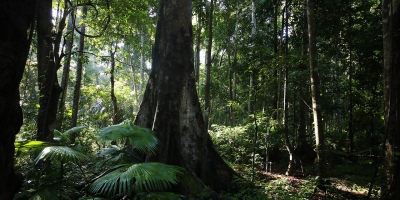
Rainforests are impressively wet and humid ecosystems found from the tropics to the boreal zone, though they tend to be much more extensive in the equatorial latitudes. Although temperature and evaporation rates play significant roles in establishing the conditions for rainforest climate, average annual precipitation – and, specifically, quite a lot of it – is the defining environmental factor: certain rainforest zones rank among the very wettest places on Earth.
These equatorial rainforests – the largest within the Amazon Basin of South America and the second-largest in central Africa’s Congo Basin – typically receive more than 80 inches of rain per year, and this precipitation falls evenly across the calendar. Above the lowland rainforest on tropical mountainsides, and on the windward slopes of subtropical mountains, cooler, higher-elevation forms of rainforest – generally termed tropical montane rainforest – may develop. A sub-type called a cloud forest often forms the uppermost reach of rainforest at elevations between 1,300 and 9,200 feet or more depending on the setting; these ecosystems, commonly characterized by stunted trees cloaked in moss, ferns and other epiphytes (arboreal plants and lichens), typically receive on the order of 79 inches of rainfall.
The equatorial rainforests of the tropical-wet climate zone aren’t the very wettest forests in the tropics: they’re rivaled or even surpassed by the monsoon forests of the tropical-monsoonal zone, which typically receives 100 to 200 inches of rain per year. Temperate rainforests, when compared with tropical rainforests, require less precipitation to maintain high levels of humidity because of their colder temperatures. One widely used definition suggests temperate rainforest receives more than 55 inches of annual precipitation, while the exhaustive book, “Temperate and Boreal Rainforests of the World” defined a broad range of precipitation — including the boreal variety — of between 33 and 320 inches, with as much as 25 percent falling during the given location’s driest season.
Credit : Sciencing
Picture Credit : Google




